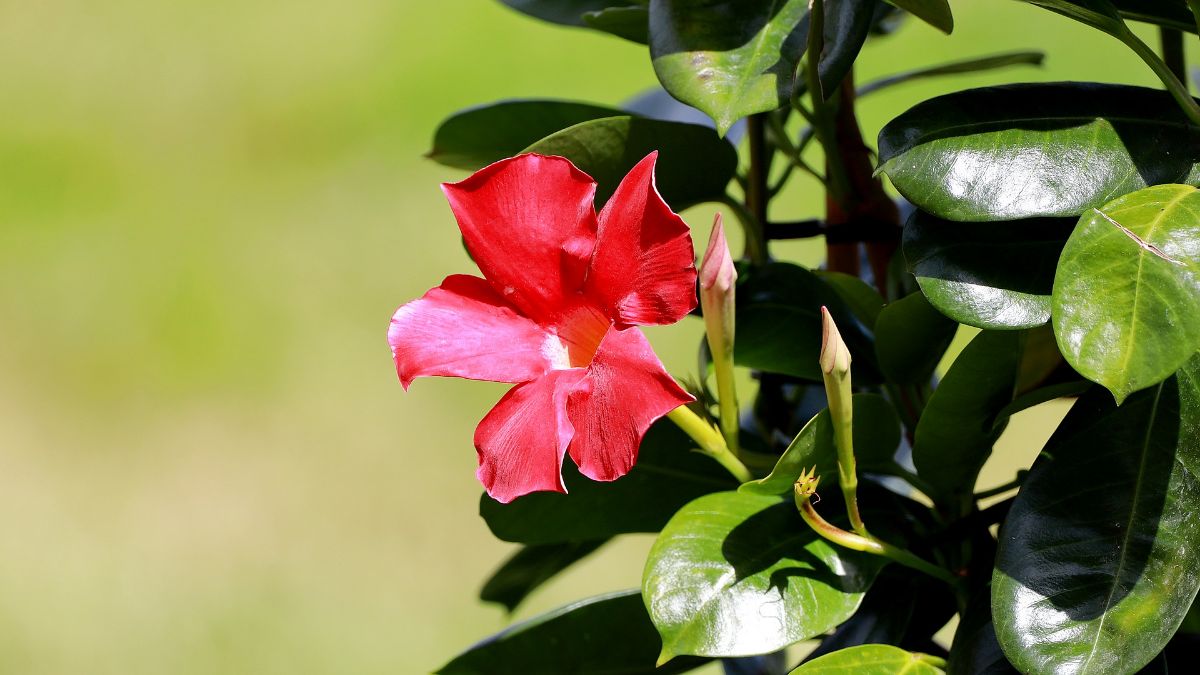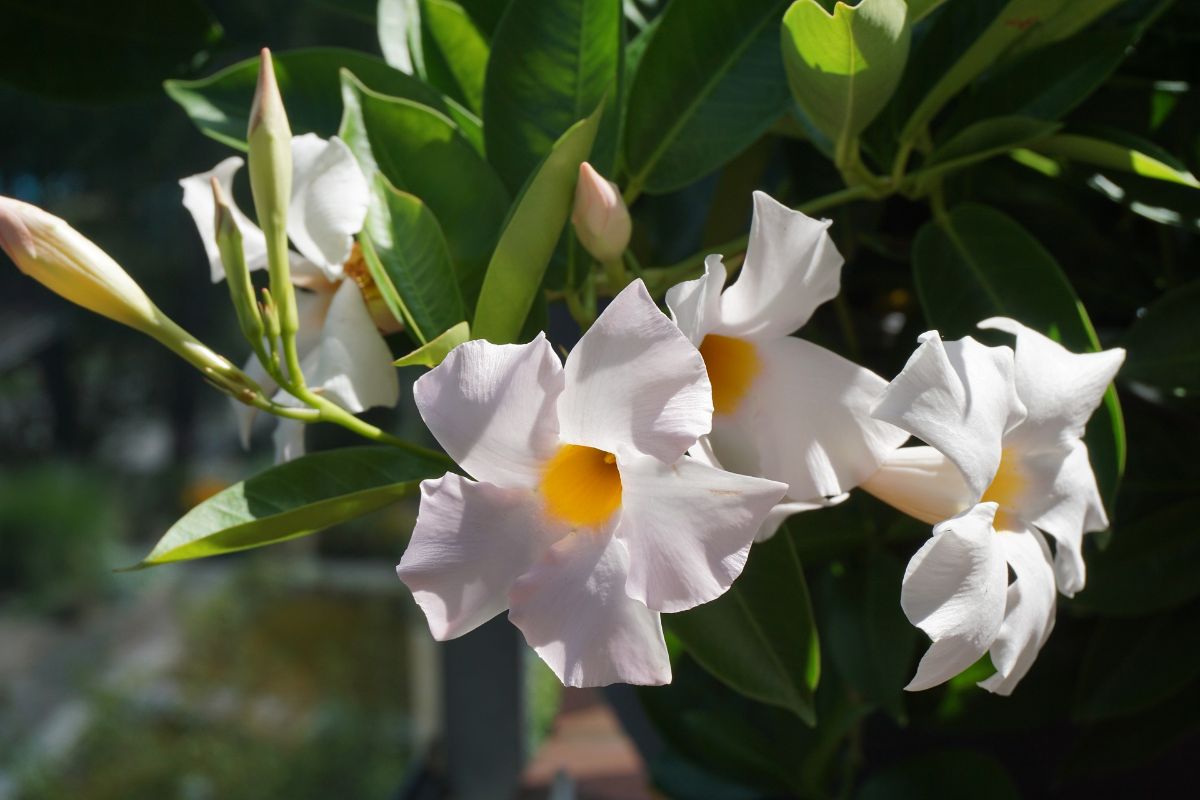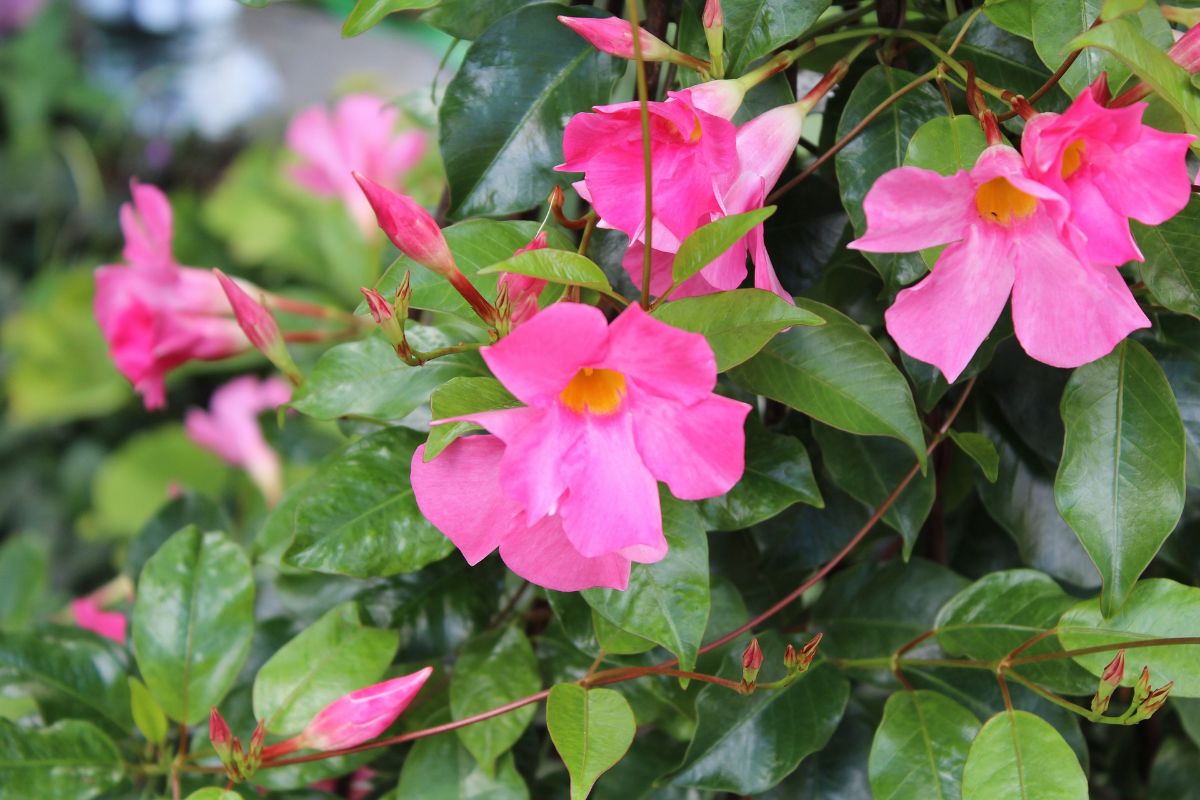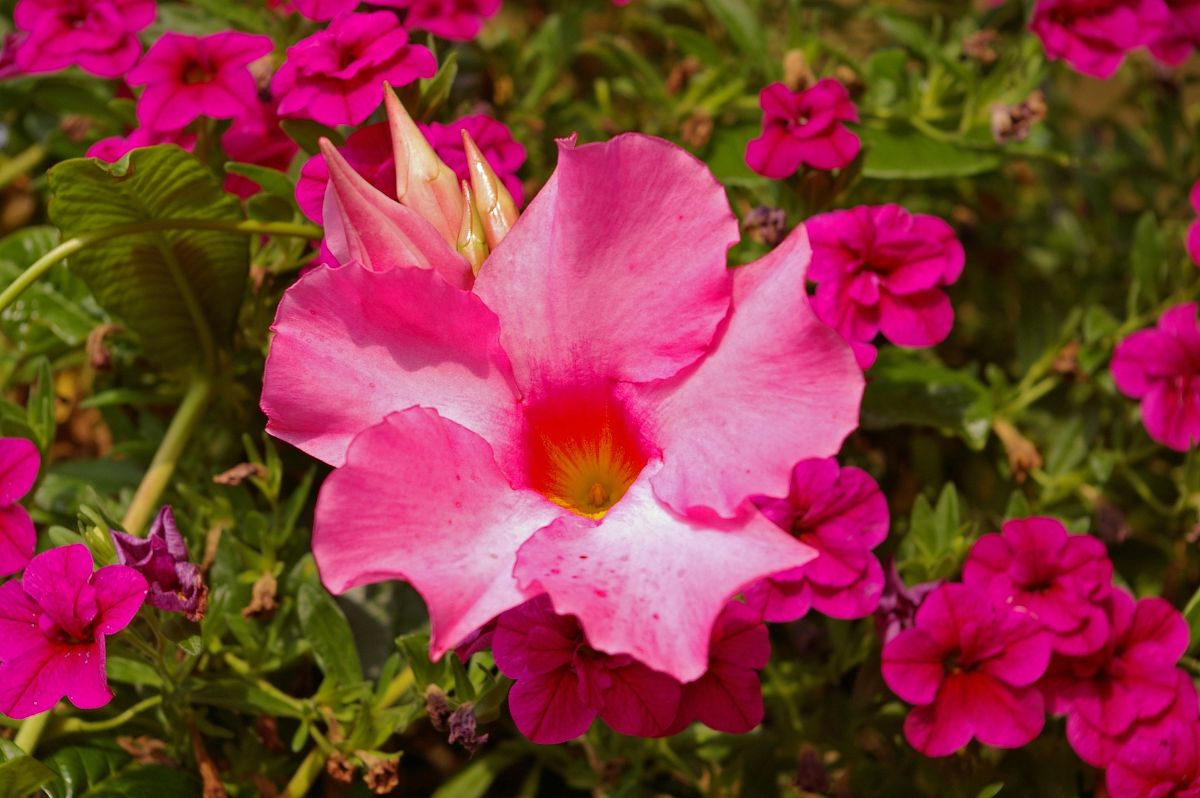
It is becoming more and more common decorate both houses and exteriors (terraces, balconies…) with hanging plants. One of the most used is the hanging dipladenia but sometimes these don't come like that. Can you have one or make it a pendant? Of course yes.
Next we are going to talk a little about dipladenia and we will tell you what you can do to make this a pendant. Go for it?
How is dipladenia

La dipladenia it is actually a climbing plant, that is, it gets entangled on the walls, lattices or wherever you let it to develop and grow easily. But it is curious because if you look at the plant, it does not have tendrils (which are like little hooks that develop so that climbing plants adhere to parts to fix themselves) but rather the trunks themselves are the ones that are grabbed in multiple ways to get this goal.
The most characteristic of this are its flowers, which are called "trumpet flower" because of the way they are. It blooms during spring and summer, but in autumn it begins to die unless you take care of it (go indoors or in a greenhouse). In fact, although the plant is perennial, when we place it in a cold climate then it becomes an annual, losing it in winter and recovering it, if all goes well, in spring.
As a plant it will not exceed 6 meters in height, although it is normal that, if it is kept in a pot, it will not reach a meter. Being a climber, it can be very upholstery, especially since it is fast growing. But in addition to having it like this, you can also consider having a hanging dipladenia.
How to have a hanging dipladenia

The vast majority of dipladenia sold in stores come with a small lattice in which they have already become entangled, or are in the process of doing so, as well as some bars to prevent the branches from falling and being damaged during transport or handling. plant.
Habitually, these are placed in areas where we want them to cover a wall or surface, or a tutor is placed on them so that it wraps around them and grows along it.
But that does not mean that you cannot have a hanging dipladenia. In fact, you can, and the technique is the same as with a poto: leave it without support.
To have a hanging plant, the first thing you need is to get one. hanging pot (It would be ideal if you had the pot and the hanger). Once you get hold of it, you must change the pot where these plants come from for one of these. It will be easier for you if you don't put the hanger on all the way, so you can move freely.
Once you have transplanted it, cut the lattice or the plastic grid that has the "prisoner" plant and with that the branches will begin to fall. Here you have two options:
- Let the plant fall completely to the ground, in such a way that when you hang the pot you will get the branches to slide down as if they were forming a curtain.
- Leave a small tutor in the center and make other branches fall. This option will help you thicken the plant because you will be placing a part of this plant to create a volume effect. For its part, the fallen branches will give it another image. At first it may not be visible, but as it grows you will see that it looks like it is bigger than it is.
Both options are fine, and everything will depend on the plant you have. If it is very bushy, you could go for the first one, but if it still needs to develop, so that it doesn't look so "bald" you can do the second idea, which will help you give it a more voluminous shape.
What care does a hanging dipladenia need?

Now that you have her hanging, you should know that her needs change a bit. Specifically, we recommend the following:
Location
always put it in one area that is well lit, but that the direct sun does not give it. Keep in mind that we have a plant where the base may be visible and if the sun hits it, it could burn it.
So opt for places with abundant natural light.
The normal thing is to have it outside, on a terrace or hanging balcony, but also, if you meet its light needs, it can be inside the house.
Temperature
dipladenia It is not a plant that tolerates much cold, Rather the complete opposite. Therefore, if you live in an area where it drops below 10 degrees, it is better to have it inside the house.
Earth
As you are going to have a hanging dipladenia you will need a pot with a soil that is nutritious and good for this plant. And this is the sandy soil.
try to make one mix between coconut fiber and black peat to get the most suitable for the plant. And don't forget to replenish as the months and years go by.
Irrigation
Be careful with irrigation, since this can be the key for your plant to survive. You have to water it abundantly in summer and moderately to scarcely in winter.
There is a guideline that says that in summer it should be watered 3 times a week and in winter every 10 days, but the truth is that this It will depend largely on what the plant asks you for.
And it is that depending on the climate, location, and the plant you can ask for more or less quantity.
So what we recommend is that first of all you let the soil dry to water (put your finger and check if it is wet, or a toothpick to see if it comes out clean and dry).
Subscriber
Do you want hanging dipladenia to survive and be perennial? Well, in addition to protecting it from low temperatures, you have to pay it once a month. This is very important because the plant needs those extra nutrients.
Now, instead of always using liquid manure, it is better to use organic fertilizers such as manure, mill horn or guano.
Pruning
Pruning is something common in a dipladenia to prevent it from growing too much or getting "out of control".
The good thing is that you can prune it from spring to summer and also the rest of the year if you see that the plant grows inadequately.
As you can see, a hanging dipladenia is not difficult to obtain or maintain. How do you like it more?